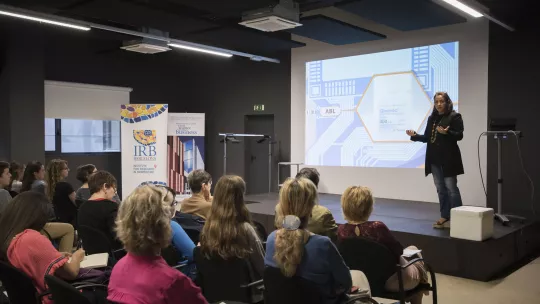Speaker: Fernando R. Balestra, PhD. - Group Leader - Centriole assembly and function in human cells - Cabimer, ANDALUSIAN CENTER FOR MOLECULAR BIOLOGY AND REGENERATIVE MEDICINE, Seville, Spain.
Presentation
Organizer: IRB Barcelona
Date: Tuesday 14 December, 12PM
Place: Fèlix Serratosa
Host: Jens Lüders, PhD, Group Leader, Microtubule Organization LAB - Mechanisms of Disease Programme, IRB Barcelona.
Title: “TRIM37 roles in centriole assembly and genome instability”
Abstract: TRIM37 is an E3 ubiquitin ligase mutated in Mulibrey nanism, a disease with impaired organ growth and increased tumor formation. TRIM37 depletion from tissue culture cells results in supernumerary foci bearing the centriolar protein Centrin (Cenpas). We characterized these centriolar protein assemblies to uncover the mechanism of action of TRIM37. We found that an atypical de novo assembly pathway can generate Cenpas that act as microtubule-organizing centers (MTOCs), including in Mulibrey patient cells. Correlative light electron microscopy reveals that Cenpas are centriole-related or electron-dense structures with stripes. TRIM37 regulates the stability and solubility of Centrobin, which accumulates in elongated entities resembling the striped electron dense structures upon TRIM37 depletion. Furthermore, Cenpas formation upon TRIM37 depletion requires PLK4, as well as two parallel pathways relying respectively on Centrobin and PLK1. Overall, our work uncovers how TRIM37 prevents the formation of supernumerary Centrin foci, which would otherwise threaten genome integrity.
Important: For attendees outside the PCB community you must register at least 24hours before the seminar.

